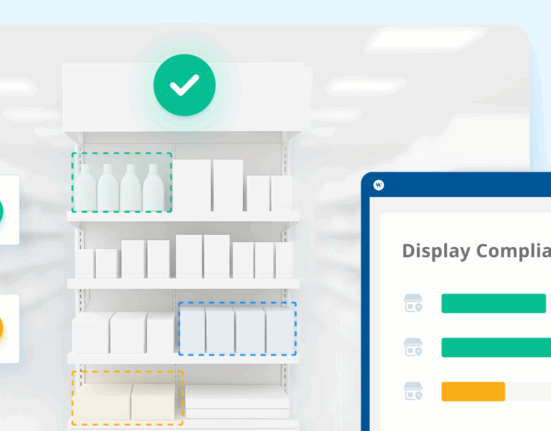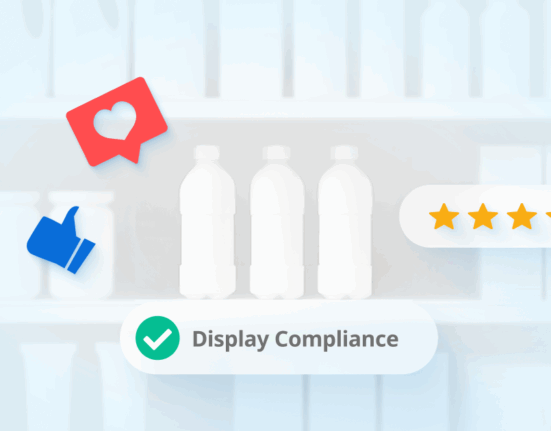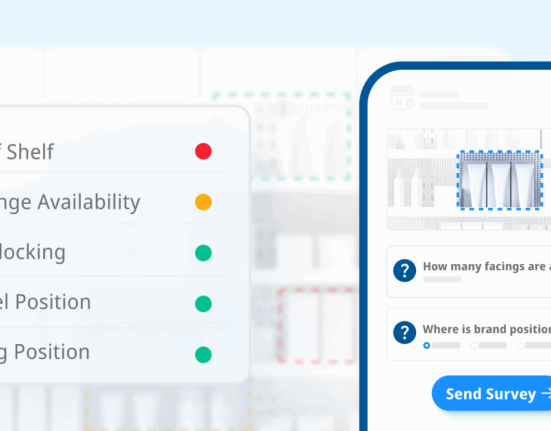The customer path to purchase is very rarely straightforward. Shoppers go through many twists and turns as they decide which product will get them the best bang for their buck.
The goal for your brand is to be there to influence consumers at those key moments in the decision-making process and sway them toward your own products. Sometimes, this can alter a customer’s final purchase completely and increase your own profits.
Typical Steps in the Path to Purchase
There are four main steps in the path to purchase, though variation may occur in each of them.

Discovery/Awareness
The purchase journey begins for the customer as soon as they stumble across a product, they have an interest in buying. This is called the discovery or awareness stage and can happen in a multitude of ways.
Say they have been having an issue with their current vacuum not picking up pet hair and have been thinking about possible solutions. Maybe a friend, coworker, or family member mentions how good their vacuum is and it piques the customer’s interest. Or, they come across an advertisement for a vacuum that specifically mentions pet hair.
Any of these can serve as the customer’s first interaction with your, or a competing seller’s, product.
Consideration
Once a shopper enters the consideration stage in their path, they usually form a shortlist of brands to buy from.
The key here is to make sure your brand ends up on that list. To do so, you need to make your product stand apart from the crowd with strategic pricing, packaging, product placement, and a displayed knowledge and confidence in your product’s capabilities.
Purchase
For many consumers, actually taking the plunge and making their purchase can take quite a while. Some shoppers do a lot of product research beforehand and buy online, others prefer to go in-store and make their choices there.
For many, their preferred product switches several times throughout their customer journey based on either reviews, pricing, or even availability in stores near the shopper. Because of this, it is important to make sure your brand is checking the right boxes on all these fronts to keep your products in the running.
Review/Feedback
To some, the last step in the path to purchase is not legitimate because it technically occurs after the actual purchase has been completed, but many brands might find this step to be extremely helpful for securing future profits.
Once a customer has purchased your products, they may leave a review of their experience that influences future buyers in their own purchase journey. This will improve your reliability, and positive reviews often mean repeat purchases from shoppers.
Therefore, positive feedback can create a cycle of continuous profit coming from both past and future shoppers.

In-Store Purchases
Since the boom of eCommerce, in-store purchasing has had to evolve to accommodate modern customer shopping preferences.
Not all customers make their way into brick-and-mortar locations anymore, which means every second they do spend in-store is more of an opportunity than ever before.
So, how do you make sure that every moment counts? How do you shorten that customer path to purchase with the use of your in-store retail strategy?
Displays
Let’s start with your displays. Shoppers may enter the store without having your products in their consideration set, but an interesting and engaging display can quickly change that.
Using retail intelligence tools, you can gather data on products that are frequently purchased with yours and display them together to draw extra attention to your brand.
Consider including lighting features in your displays or organizing your products into a color-blocked formation to catch the eye of passing shoppers.
Creating displays that coincide with seasonal events or holidays can also increase your visibility if your product is more frequently bought at specific times of the year.
Pricing
Of course, pricing can be the number one most influential piece of information consumers consider before completing their path to purchase. The cost of a product can affect the shopper’s final decision at each step in their journey.
Someone else raving about how effective a certain product is for an economically friendly price can be the first point of contact a potential customer has; it could be the information that puts your brand into their shortlist for consideration as they grow closer to purchasing.
Developing an optimized pricing strategy that competes with other brands without costing you profits can be challenging, but it cannot be overlooked if you hope to win more sales at the shelf. For some products, something as simple as implementing a coupon or sale schedule can exponentially increase sales.
Packaging
Just like with your product displays, the goal with packaging is to make your products stand out in the crowd. You need your product packing to reach out and grab the attention of a passing shopper to ensure that your brand enters their consideration, whether they initially intended to look at your products or not.
There are several ways to do this, like offering interactive packaging if your products are aimed at children, or clear and easy-to-read fonts for those with visual challenges. Packaging that evokes an emotional reaction can lead to impulse purchases and bypass other steps in the purchasing journey altogether.
For example, if that customer with the pet hair issue comes across a vacuum at the store with a label that reads, “Your pets have never appreciated you more,” and includes a photo of puppy, this could be the relatability that spurs them into making a purchase.
Employee Engagement
One big reason that modern shoppers still bother to visit brick-and-mortar stores when they have the entirety of eCommerce at their fingertips is human interaction. This means that the employees who work at the retailers selling your products could be the final influence a shopper needs to make their purchasing decision.
Ensuring that ground-level workers are knowledgeable and familiar with your products can increase recommendations being made in favor of your brand, and often there is no better advertisement than word of mouth endorsement.

Online Purchases
Though we continue to pursue in-store shopping, we cannot ignore the significant percentage of retail purchases being made online. Creating a marketing strategy targeted specifically at eCommerce is pertinent to a successful business model.
The online shopping side of retail presents its own unique set of business challenges that need to be addressed to have an influence on the path to purchase.
Product Pages
Online, all the information a customer needs to know about any given product should be available to them with a couple clicks of their mouse. Details like item descriptions, directions, ingredient lists, and sizing provide insight to the consumer.
Your product pages are some of the first points of contact a shopper has with your brand and can make or break your chances of purchase right from the beginning. Consumers are less likely to trust a product page with little information and photos, or a website that does not look like it receives consistent updates.
Ensuring that your webpages are easy to understand and provide thorough information on any given product is an essential step in successful eCommerce.
Pricing
One business issue that brands will face both in-store and online is that of optimizing a pricing strategy. Online, pricing competitively can be even more difficult with the inclusion of tools that offer pricing comparisons on competing brands.
Just like with in-store pricing, creating a coupon or sale schedule for your products can help increase your profits.
For example, Amazon will often send deals to shoppers that are targeted specifically at items they’ve kept in their carts for a prolonged period. These deals usually expire a short time after the shopper receives them, pushing them toward a quicker purchase than they might have made otherwise.
A sale strategy like this can promote impulse buying and does not create a high profit loss because not every consumer is getting the same deal.

Where to Buy
Though consumers may complete much of their path to purchase online, some still prefer to buy their products in-store to get a better feel for the product before purchase, or simply for instant gratification.
Either way, helping the customer get to a retailer that offers your product is an online feature that can get you a step closer to profit. This is where including a “where to buy” feature can be extremely beneficial.
For many shoppers, a lack of immediate availability can be the final nail in the coffin that eliminates a product from their consideration list. In general, consumers don’t want to wait if they don’t have to.
Not only will the in-store availability of a product provide the customer with the opportunity to buy, but it may also be the last push they need to make their purchase.
Chatbots
Just like shoppers who venture in-store to get a dose of human interaction along with their product purchase, online shoppers crave that same contact from the comfort of their homes. This is where having a chatbot feature on your website can be helpful.
The bot should be able to answer basic questions for shoppers or link them to a customer representative who can share even more information. Just like with retailer employees, a word-of-mouth recommendation can be the deciding influence a shopper needs to complete their purchase journey.
As a bonus, the chatbot could also link them directly into the “Where to Buy” feature that was mentioned previously and point them directly to your product.
As a brand, your goal is to intercept shoppers at each major step in their journey and make sure your products stand out above the rest, both online and in-store. Working to shorten the customer path to purchase is essential when building a successful retail strategy.









